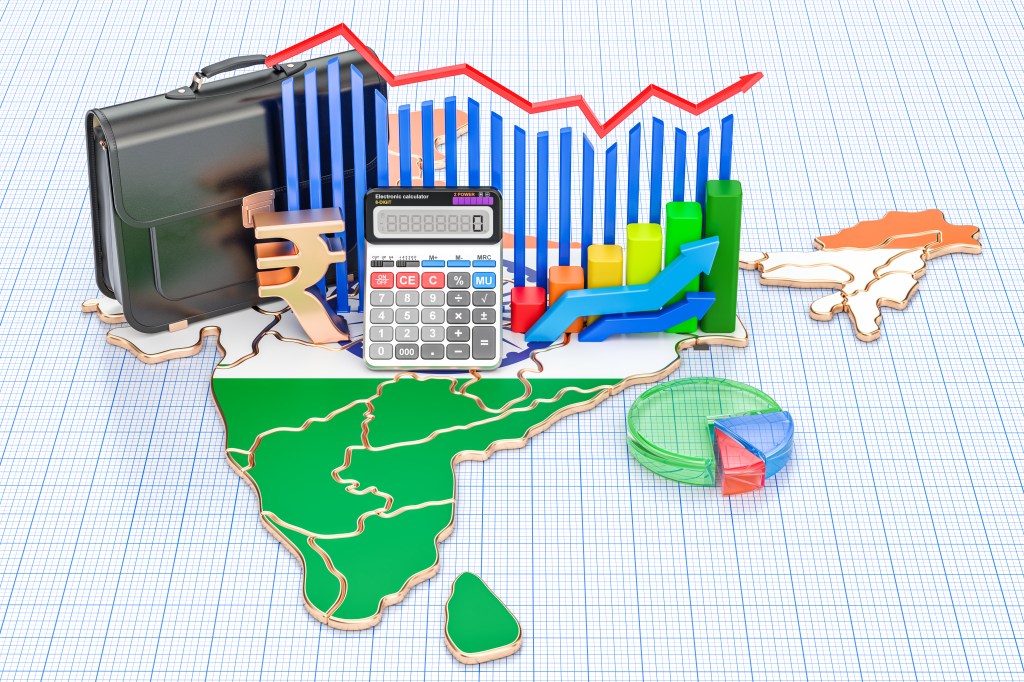The quarterly report cards are in, and the posterchild of emerging economies looks to be failing on all fronts.
India recorded a world-beating but shabby-by-its-own-high-standards 5.4% growth in GDP for the second quarter, which runs from July to September in the South Asian powerhouse.
And the list of institutions that got it wrong – by a long shot – may be equally depressing: Morgan Stanley (7%), Goldman Sachs (6.3%) and State Bank of India (6.3%), the country’s largest state-owned lender, all expected more. As did the central bank (7%)!
What went wrong
In a word? Everything.
In the Indian calculation, GDP equals consumption, business investment, government spending and net exports.
Consumption was sluggish this past quarter and, it turns out, demand isn’t returning soon. “Our checks for festive-season demand indicate that it was not broad-based and only certain pockets of consumption fared well,” says Garima Kapoor, a vice-president and economist at Elara Capital. The Mumbai-based investment bank has also revised down its full-year estimate for GDP by 30 basis points to 6.5% yearly growth.
And business investment? That’s Gross Fixed Capital Formation if you want to get technical, and it’s come down from 10.1% to 6.4% on a yearly basis.
And it doesn’t get any prettier when it comes to government expenditure.
In fact, SBI economists blame the GDP squeeze on lack of government spending in the first half of the financial year, by both the central and state governments.
“Out of 17 major states only five states exhibited an increase in expenditure” in the first half compared to a year ago, says Soumya Kanti Ghosh, group chief economic advisor at SBI. “We are not expecting any uptick in the H2 expenditure thus keeping the overall growth numbers realistically between 6-6.5% only” for the full year.
The last bit is net exports, which, according to Moody’s, fell by 36% in the July to September period.
Widespread weakness
A deep dive into the numbers reveals widespread weakness on a yearly basis in core sectors such as manufacturing, mining and construction among others. For example, India produced a smaller amount of coal, cement and crude oil and consumed less steel, while the sales of commercial vehicles were also lower compared with last year.
Industrial production in all core sectors including mining, electricity and metallic minerals contracted from double digits to the lower single digits.
Good old corporate earnings drive the market, but companies in the Nifty 50 posted their weakest earnings in 17 quarters in the July-to-September period, according to Indian brokerage Motilal Oswal.
What should investors do?
Well, some sectors have done well. These include agriculture and allied activities, trade, hotels, transport, communication and services related to broadcasting. Going ahead, market leaders from these areas with good corporate earnings should be worth watching out for.
Automakers Mahindra & Mahindra and Eicher Motors, hotels firms EIH (Oberoi Group) and IHCL (which operates the Taj chain of hotels), and Insecticide India and Dhanuka Agritech are all trading below their industry price-to-earnings ratios. So are Nifty 50 members SBI, hotels-to-consumer-goods conglomerate ITC, IT giants TCS and Infosys, HUL and NTPC.
Keep an eye on foreign investors too – they’ve pulled out $12.5 billion in the past two months and haven’t yet made a comeback.
Rate cut
Economists want a rate cut to spur consumption, but they’re divided on when the bank is likely to begin easing.
India skipped an interest rate cut last time around, because of concerns about inflation, which has jumped to 6.21%.
SBI’s Ghosh doesn’t foresee any rate cuts in the current financial year. “A first rate cut and further change in stance is likely in April 2025,” he says.
Aurodeep Nandi, an investment bank economist who also runs the YouTube channel “The Bond Economist”, says it straight: “The more you wait now, the more you risk deepening the crisis.”
The central bank meets to discuss rates on Friday. So, watch this space.






